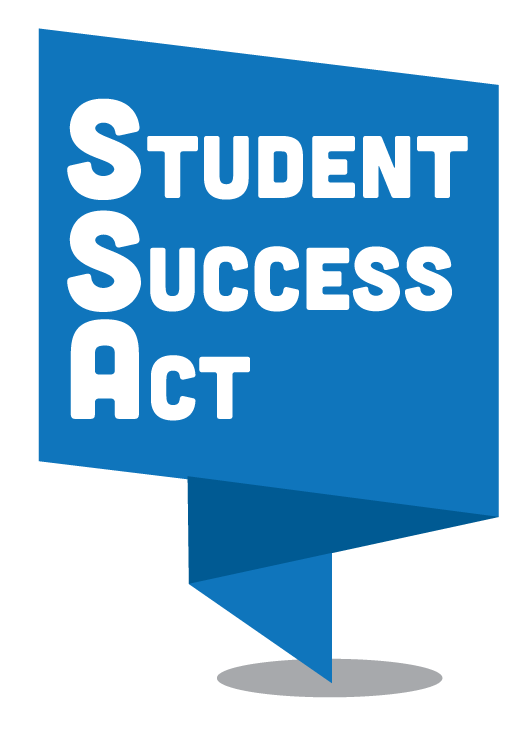-
Join us at a community meeting to discuss how PPS will use funds from Student Success Act
9/24/2019With Oregon’s public schools about to get a major infusion of funding from the state, Portland Public Schools will embark on a series of community meetings at which families, students and community members will help us shape how the money from the Student Success Act will be used in the district.
Please plan to attend one of the following meetings to offer your feedback and ask questions about PPS’s plans for Student Success Act funding:
- Thursday, October 17, 6 p.m., Lent K-8 School (5105 SE 97th Ave.)
- Saturday, October 19, 9 a.m., Faubion PK-8 School (2930 NE Dekum St.)
- Tuesday, October 22, 6 p.m., Roosevelt High School (6941 N. Central St.)
The Student Success Act originated as House Bill 3427 and was signed into law by Gov. Kate Brown. It provides a historic $2 billion investment in the state’s preK-12 education system.
"This is a huge and historic win for public education in general and for Portland Public Schools in particular," PPS Superintendent Guadalupe Guerrero wrote in a letter to the community. "Our work begins now to lay out a plan for how we will use our share of the additional funds, starting in the 2020-21 school year, in ways that will improve the educational experience for all of our diverse learners."
The infusion of funding will help PPS begin the transformative work to fulfill the long-term vision for the district identified through a comprehensive, community-oriented Visioning process. The PPS Vision (read the full Visioning document) describes our goals for the graduating class of 2030, and the educational experience that will increasingly be the reality for each of our graduates from 2019 onward.
How the Student Success Act money is allocated
Student Investment Account, 50%: The Student Success Act dedicates half of its funding to a newly-established Student Investment Account that will be distributed as non-competitive grants to all Oregon school districts and eligible charter schools. Districts are allowed to invest that money toward addressing class size, providing a well-rounded education, instructional time, and health and safety. Within those four investment categories, districts have these five priority areas:- Reducing academic disparities for students who are of color; have disabilities; are emerging bilingual; are navigating poverty, homelessness and foster care; or have historically experienced disparities in schools
- Meeting students' mental and behavioral health needs
- Providing access to academic courses
- Allowing teachers and staff sufficient time to collaborate, review data and develop strategies to help students stay on track to graduate
- Establishing and strengthening partnerships
Statewide Education Initiatives Account, 30%: Dedicated to expanding school breakfast and lunch programs, operating the youth reengagement system, establishing the Statewide School Safety and Prevention System, developing statewide equity initiatives, providing summer learning programs for certain schools and full funding for Measure 98 (which provides direct funding to school districts to increase high school graduation rates).
Early Learning Account, 20%: Dedicated to early childhood special education and early intervention services, relief nurseries, professional development, Head Start programs, among others. The grants are aimed at promoting capacity of culturally-specific organizations and reducing the equity gap for early childhood program
Other forms of feedback
In addition to the community meetings, members of the public will be able to offer feedback through an online form that will soon be available at www.pps.net/studentsuccessact.
By Month
- June 2025
- May 2025
- March 2025
- February 2025
- January 2025
- October 2024
- September 2024
- June 2024
- May 2024
- April 2024
- March 2024
- February 2024
- January 2024
- December 2023
- November 2023
- October 2023
- September 2023
- August 2023
- June 2023
- May 2023
- January 2023
- December 2022
- November 2022
- October 2022
- September 2022
- August 2022
- July 2022
- June 2022
- May 2022
- April 2022
- March 2022
- February 2022
- January 2022
- December 2021
- November 2021
- October 2021
- September 2021
- August 2021
- July 2021
- June 2021
- May 2021
- April 2021
- March 2021
- February 2021
- January 2021
- December 2020
- October 2020
- September 2020
- August 2020
- July 2020
- June 2020
- May 2020
- April 2020
- March 2020
- February 2020
- January 2020
- December 2019
- November 2019
- October 2019
- September 2019
- August 2019
- June 2019
- May 2019
- April 2019
- March 2019
- February 2019
- January 2019
- December 2018
- November 2018
- October 2018
- September 2018
- August 2018
- July 2018
- June 2018
- May 2018
- April 2018
- March 2018
- February 2018
- January 2018
- December 2017
- November 2017
- October 2017
- September 2017
- August 2017
- July 2017
- June 2017
- May 2017
- April 2017
- March 2017
- February 2017
- January 2017
- December 2016
- November 2016
- October 2016
- September 2016
- August 2016
- July 2016
- June 2016
- May 2016
- April 2016
- March 2016
- February 2016
- January 2016
- December 2015
- June 2015



